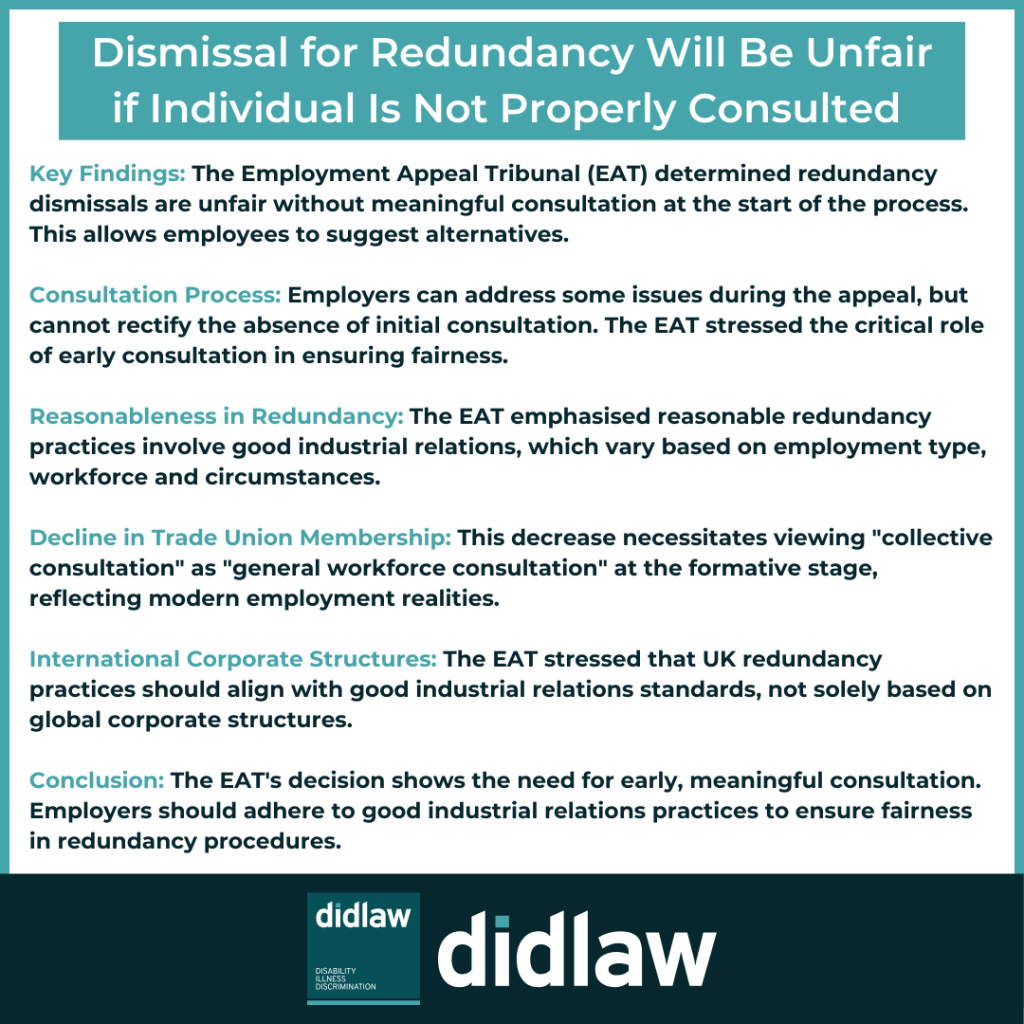
The Employment Appeal Tribunal (EAT) has held that an employee’s dismissal for redundancy was unfair due to the absence of meaningful consultation at the formative stage of the redundancy process. This would have provided the opportunity to propose alternatives to redundancy and to influence the employer’s decision. There was nothing in the tribunal’s decision which demonstrated good reasons for the absence of such consultation.
When the employee appealed, the employer could correct any missing aspect of the individual consultation process (for example, provision of the employee’s scores against the selection criteria), but it could not repair the gap of consultation in the formative stage which the EAT had identified.
Having reviewed the legal authorities on reasonableness in redundancy situations, the EAT identified a “theme” that employers acting within the band of reasonableness follow what is regarded to be good industrial relations practice (which will vary widely depending on the type of employment, workforce and the specific circumstances giving rise to the redundancy situation).
The EAT also identified two matters of particular significance affecting good industrial relations practice that had changed significantly since the 1980’s when some of the leading cases were decided.
The first was the reduction of trade union membership (outside the public sector). The authorities drew a distinction between “collective consultation”, which was viewed as discussions with representatives about the overall approach to the workforce at risk of redundancy, and “individual consultation” which considered the circumstances of a specific individual. This failed to recognise the reality of good industrial relations in the modern employment environment. It might be better to describe collective consultation as “general workforce consultation” which should occur at the formative stages of a redundancy process.
The second matter that had changed significantly was the growth in employers having an international element in their corporate structure. In this case, a tool for selection using entirely subjective criteria was provided by a US parent company. Considering it reasonable for a UK employer to use US selection criteria solely because the organisation is a global one would not, in the EAT’s view, reflect good industrial relations in the UK.
You can read more about this decision here.
This blog was written by Karen Jackson, MD of didlaw.
